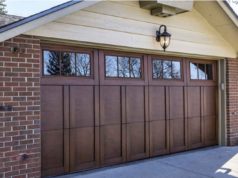Lipinski Celebrates Completion of McCook Reservoir Project That Will Reduce Local Flooding and Help Clean Lake Michigan
Washington, DC – (RealEstateRama) — Congressman Dan Lipinski (IL-3) joined with Senator Dick Durbin, Congressman Mike Quigley (IL-5), officials from the Metropolitan Water Reclamation District (MWRD) of Greater Chicago, the U.S. Army Corps of Engineers, and other area organizations today to officially announce the completion of McCook Reservoir Stage 1, a 3.5 billion gallon section of the McCook Reservoir, part of the MWRD’s Tunnel and Reservoir Plan (TARP). Also known as Deep Tunnel, this project will prevent flooded basements and will also reduce pollution in Lake Michigan. Local communities with flooding problems, such as Lyons and Bedford Park, will especially benefit.
“As the senior Illinois Representative on the House Transportation and Infrastructure Committee, I’m proud to have worked with my colleagues to provide the funding to make this possible, and I thank the MWRD and Army Corps of Engineers for their hard work,” said Rep. Lipinski. “For decades, flooding and combined sewer overflows were nearly guaranteed during heavy rain storms. Lack of an effective flood control system resulted in extensive property damage as basements and streets flooded. Completion of this project is estimated to provide $114 million per year in flood reduction benefits and will especially help residents of communities in the southwestern suburbs which repeatedly suffer from flooded basements.”
As the House Transportation and Infrastructure Committee was drafting the 2016 Water Resources Development Act, which was signed into law last year, Congressman Lipinski secured a provision that prioritized funding and accelerated the construction timeline for the next critical flood control project, McCook Reservoir Stage II. When that project is completed, the reservoir will have a total storage capacity of 10 billion gallons and deliver an additional $143 million per year in flood reduction benefits.
TARP is one of the country’s largest public works projects for flood control and pollution. It covers a 375-square-mile area that includes Chicago and 51 suburbs that rely on a combined collection system. It has already led to significantly improved water quality in the area, boosting tourism and quality of life.






